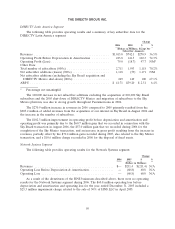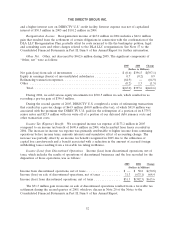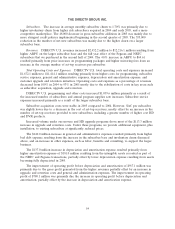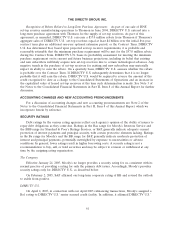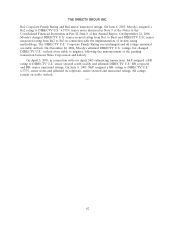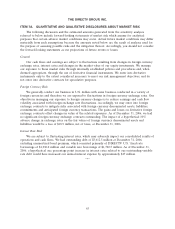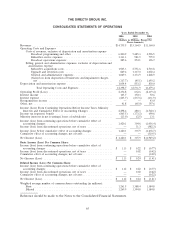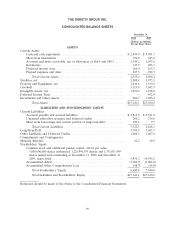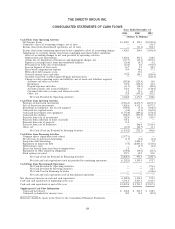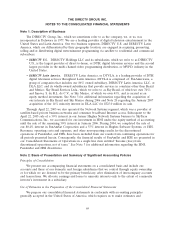DIRECTV 2006 Annual Report Download - page 71
Download and view the complete annual report
Please find page 71 of the 2006 DIRECTV annual report below. You can navigate through the pages in the report by either clicking on the pages listed below, or by using the keyword search tool below to find specific information within the annual report.THE DIRECTV GROUP, INC.
operating activities. The underlying assumptions we use in forecasting future taxable income require
significant judgment. In the event that actual income from operating activities differs from forecasted
amounts, or if we change our estimates of forecasted income from operating activities, we could record
additional charges in order to adjust the carrying value of deferred tax assets to their realizable
amount. Such charges could be material to our consolidated results of operations and financial position.
In addition, the calculation of our tax liabilities involves dealing with uncertainties in the
application of complex tax regulations. We recognize liabilities for anticipated tax audit issues in the
United States and other tax jurisdictions based on our determination of whether, and the extent to
which, additional tax payments are probable and estimable. If we ultimately determine that payment of
these amounts is unnecessary, we reverse the liability and recognize a tax benefit during the period in
which we determine that the liability is no longer necessary. We record an additional charge in our
provision for taxes in the period in which we determine that the recorded tax liability is less than we
expect the ultimate assessment to be.
Contingent Matters. Determining when, or if, an accrual should be recorded for a contingent
matter, including but not limited to legal and tax issues, and the amount of such accrual, if any,
requires a significant amount of management judgment and estimation. We develop our judgment and
estimates in consultation with outside counsel based on an analysis of potential outcomes. Due to the
uncertainty of determining the likelihood of a future event occurring and the potential financial
statement impact of such an event, it is possible that upon further development or resolution of a
contingent matter, we could record a charge in a future period that would be material to our
consolidated results of operations and financial position.
Valuation of Long-Lived Assets. We evaluate the carrying value of long-lived assets to be held and
used, other than goodwill and intangible assets with indefinite lives, when events and circumstances
warrant such a review. We consider the carrying value of a long-lived asset impaired when the
anticipated undiscounted future cash flow from such asset is separately identifiable and is less than its
carrying value. In that event, we recognize a loss based on the amount by which the carrying value
exceeds the fair value of the long-lived asset. We determine fair value primarily using the estimated
future cash flows associated with the asset under review, discounted at a rate commensurate with the
risk involved, and other valuation techniques. We determine losses on long-lived assets to be disposed
of in a similar manner, except that we reduce the fair value for the cost of disposal. Changes in
estimates of future cash flows could result in a write-down of the asset in a future period.
Valuation of Goodwill and Intangible Assets with Indefinite Lives. We evaluate the carrying value of
goodwill and intangible assets with indefinite lives annually in the fourth quarter or more frequently
when events and circumstances change that would more likely than not result in an impairment loss.
We completed our annual impairment testing during the fourth quarter of 2006, and determined that
there was no impairment of goodwill or intangible assets with indefinite lives.
The goodwill evaluation requires the estimation of the fair value of reporting units where we
record goodwill. We determine fair values primarily using estimated cash flows discounted at a rate
commensurate with the risk involved, when appropriate. Estimation of future cash flows requires
significant judgment about future operating results, and can vary significantly from one evaluation to
the next. Risk adjusted discount rates are not fixed and are subject to change over time. As a result,
changes in estimated future cash flows and/or changes in discount rates could result in a write-down of
goodwill or intangible assets with indefinite lives in a future period which could be material to our
consolidated results of operations and financial position.
60


